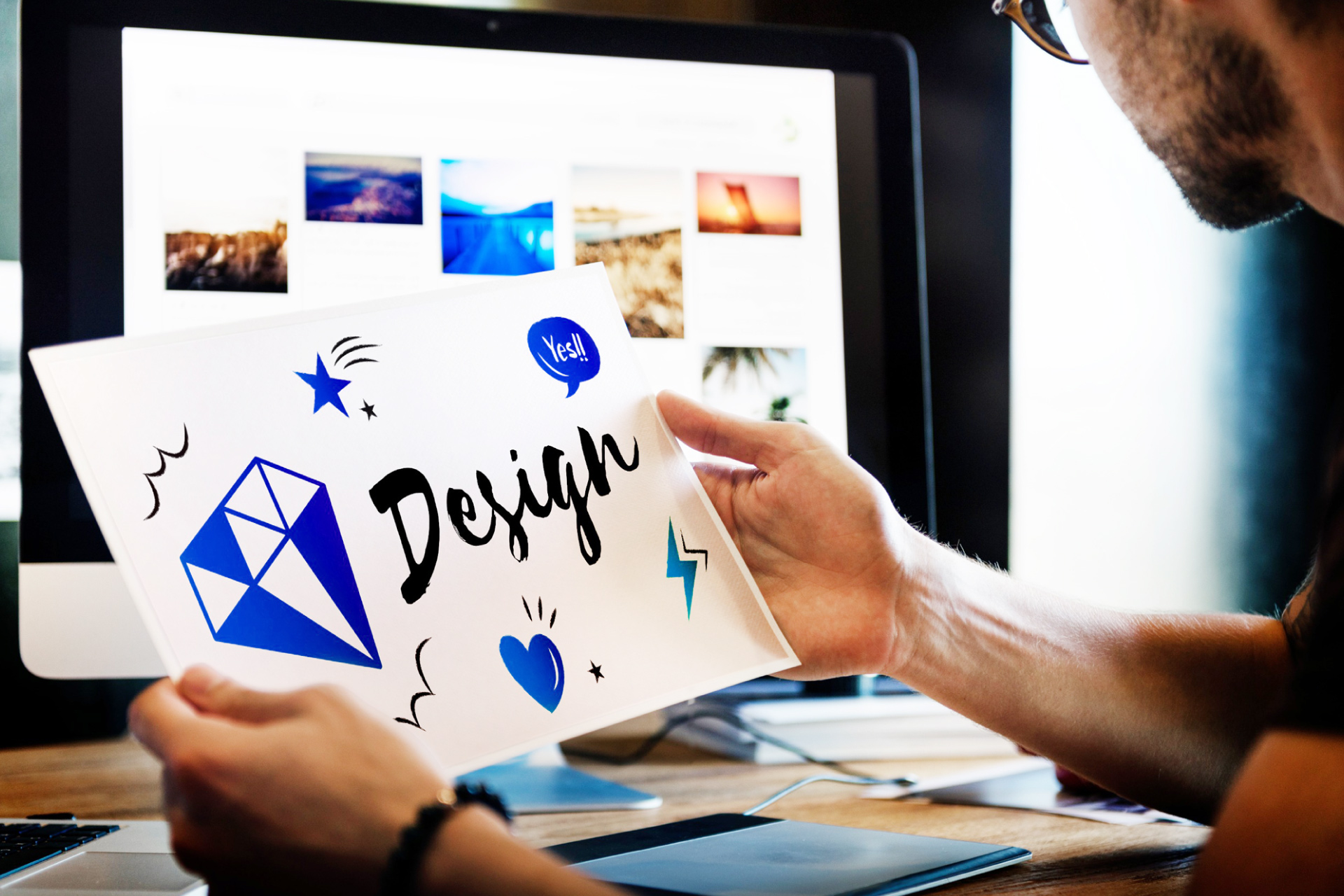Is Hiring a Full-Time Graphic Designer Right for Your Business in 2024?

In today’s fast-paced digital landscape, graphic design plays a pivotal role in determining a brand’s success. The aesthetics, consistency, and clarity of visual content can heavily influence a business’s appeal.
With evolving design paradigms, especially the design trends in 2024, the pivotal question emerges: Is hiring a full-time graphic designer the best route for your business?
Table of Contents
Understanding the Role of a Graphic Designer
A graphic designer isn’t just about creating logos or brochures; it’s about conveying a brand’s message, values, and objectives visually.
In the age of digital transformation, with the increasing AI involvement for graphic designers, their role has broadened to integrate technology, strategy, and creativity, ensuring that a business’s voice remains consistent and powerful across diverse platforms.
Misconceptions About Graphic Designers
Unfortunately, some business owners have misconceptions about the role and scope of graphic designers when hiring a full-time graphic designer.
These misconceptions can lead to unrealistic expectations and strain the designer-business owner relationship. Let’s debunk a few:
- Jack of All Trades: One of the most common misconceptions is that graphic designers should be versatile enough to handle all types of design work, from motion graphics to detailed illustrations and even arts. While many designers have a range of skills, each design specialty requires specific expertise. Expecting one individual to master them all can lead to subpar results.
- Beyond Design Duties: Some believe that a graphic designer’s role extends to managing social media pages, marketing campaigns, and even contributing to sales. This is a misstep. While designers play a significant role in creating content for these platforms, managing them is a different ball game. A designer’s core strength lies in visual communication, and diverting their focus to tasks outside their purview might not yield the best outcomes.
- Instantaneous Creation: A prevalent misconception is the belief that graphic design is a quick process. Some business owners expect designs to be churned out rapidly, underestimating the time required for conceptualization, iterations, and refinements. Quality design takes time, and it’s a process that shouldn’t be rushed if you’re aiming for impactful results.
- Designers Are Mind-Readers: Another common misunderstanding is that graphic designers should immediately grasp a vague idea or vision without much explanation. While designers are trained to translate ideas into visuals, clear communication is crucial. Providing them with a clear brief, feedback, and ongoing collaboration will lead to a more accurate representation of the envisioned design.
- Physical Presence Equals Productivity: A lingering misconception in the business world is that graphic designers, like many other professionals, need to be physically present in an office environment to be truly productive. Some believe that a designer must be “seen” working at their computer to ensure they are dedicated to their tasks. In today’s digital age, where remote work and freelancing are becoming more prevalent, this couldn’t be further from the truth. Many graphic designers thrive in flexible environments, free from the distractions of a traditional office. Trusting in their professionalism and judging them by the quality and timeliness of their work, rather than their physical presence, can lead to better morale and, often, better results.
Pros of Hiring a Full-Time Graphic Designer
- Consistency: With a dedicated designer, your branding remains unwavering and consistent across all channels, strengthening brand recognition.
- Quick Turnaround: Immediate feedback, iterative design processes, and the ability to pivot quickly are paramount, especially when launching new campaigns.
- Dedication: A full-time designer becomes more familiar with your brand’s ethos, ensuring all designs resonate with your business’s core values.
- In-House Collaboration: Having a designer on site facilitates faster and more effective collaboration with marketing, sales, and other departments.
Cons of Hiring a Full-Time Graphic Designer
- Cost: Beyond the basic salary, there are benefits, training, and resources to consider.
- Potential Underutilization: There may be periods where a full-time designer might not have enough tasks, leading to potential inefficiencies.
- Limited Diversity: Depending solely on one perspective might narrow down creative diversity.
- Overhead: The additional expenses of top-tier software, workspace, and equipment can accumulate.
- High Turnover and Rehiring Concerns: Hiring a full-time graphic designer comes with the inherent risk of turnover. If an employee decides to leave after just a few months, businesses are back to square one — having to restart the recruitment and training process. This not only consumes valuable time but also drains resources. For small businesses with limited bandwidth, this recurring cycle can become a substantial challenge, making it difficult to maintain consistency and momentum in design initiatives.
Alternatives to Hiring Full-Time
- Freelancers: They offer flexibility and often come at a lesser cost, but maintaining brand consistency can sometimes become challenging.
- Design Agencies: A professional team provides diverse talents but might strain smaller budgets.
- On-Demand Design Services: A middle ground that’s gaining traction is the on-demand design agency model, offering flexibility, a plethora of design styles, and often cost-effective solutions.
Factors to Consider Before Making a Decision
- Scale of Your Business: Assess the volume of regular design work. Will it justify a full-time position?
- Budget Constraints: Weigh the ROI of hiring full-time versus other alternatives.
- Nature of Design Needs: If your brand requires frequent design updates as opposed to periodic campaigns, a full-time role might be justified.
- Growth Trajectory: If you’re looking to expand, consider how the need for consistent branding will increase.
Navigating the Design Decisions
The debate on hiring a full-time graphic designer isn’t a one-size-fits-all answer. As the world moves forward with innovative design strategies, AI integrations, and ever-evolving design trends, it’s vital for businesses to stay informed and adaptable.
Whether you’re leaning towards a hiring a full-time graphic designer or considering partnerships with on-demand design agencies, ensure your decision aligns with both present needs and future aspirations.
Remember, the goal is to find a balance that serves your brand’s narrative, budget, and growth trajectory.
In today’s fast-paced business world, managing design can be overwhelming. Leave it to the experts at TripleGrowth. As a premier on-demand design agency, we simplify, innovate, and elevate your brand. With designs that resonate and stay ahead of trends, we’re your solution to design challenges. Connect with us today and see how we can help you.
Why is hiring a full-time graphic designer beneficial for businesses?
Hiring a full-time graphic designer ensures brand consistency, immediate design revisions, and deep alignment with company culture.
How do costs compare when hiring a full-time graphic designer vs. freelancers?
Hiring a full-time graphic designer may have higher initial costs including benefits, but offers long-term investment in brand consistency and in-house collaboration.
What should businesses consider before hiring a full-time graphic designer in 2024?
Before hiring a full-time graphic designer in 2024, consider the volume of design needs, the importance of brand consistency, and budget constraints.
How has the role of a full-time graphic designer evolved by 2024?
By 2024, a full-time graphic designer’s role encompasses multi-media design, understanding of AI tools, and often a broader strategic input into branding and marketing campaigns.
Are there any downsides to hiring a full-time graphic designer?
Some potential downsides to hiring a full-time graphic designer include commitment to a single design perspective and potential overhead costs, especially for smaller businesses.


